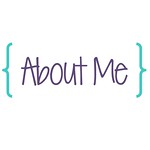When using books loaded with important facts, I find that it is easy for my students to become overwhelmed. To help keep them on track, I have students create FQR charts. I learned about FQR charts in a class I took last school year. (F = facts, Q = questions, R = responses)
My students created the FQR charts in their reader's notebooks. The first time we started using the charts, we completed most of the chart together. With time, students have begun to create the charts more independently.
In the "facts" column, we work on only including the most important information. We discuss how we are not just writing down the first fact we see. These facts need to be meaningful. (Always working on determining importance - such a tricky skill!) For the "questions" column, we focus on writing quality questions. These should not be questions we could find in the text. We also try to move away from superficial questions to deeper, richer questions. With the "response" column, students write their opinion, or reaction, to what they read.
With each book or story, I also like to work on a written response. I usually just have students write the question in their reader's notebooks. Sometimes we answer the question together, and other times students answer the question independently. As we get ready for the state tests, we are really working on going back and proofreading our answers. (They are getting better. Only one mistake in the example above!)
If you would like a FQR graphic organizer to try for yourself, click on the image above! Once I tried this type of chart, I was officially hooked. It is such a simple concept, but it really keeps the students focused and helps them organize the information in a meaningful way.
Does anyone else use FQR charts with their students? I would love to hear what you do, or if you have any other great ways to organize information!










Cool! I'm a KWL lover, but I will definitely try this. Thanks for introducing it!
ReplyDelete-Maria
Everyone deServes to Learn
I like the FQR idea. I tend to use a KWL but I will have to try this next time. Thanks for sharing.
ReplyDeleteHunter's Tales from Teaching
This is the first time I've heard of an FQR chart, but I'm loving the idea and will be trying it the first chance I get. Thanks for sharing!
ReplyDelete~Courtney
Polka Dot Lesson Plans
I love the FQR charts, I am definitely going to try this! I am a new follower!
ReplyDeleteBethany
FabandFunin4th!
Thank you for sharing! I teach second and it is SO hard to get them to come up with questions that are not already answered in the text or that they don't already know.
ReplyDeleteJessica
Literacy Spark
Found you on the Manic Monday Linky! This is a super idea!
ReplyDeletePop over for a visit! I'm having a GIVEAWAY!! :)
Erin
Mrs. Beattie's Classroom
This is a great idea! It seems like it would help the kids stay on point! Thanks for sharing at Manic Monday!
ReplyDeleteHi! I just found your cute blog & I'm your newest follower!
ReplyDelete✿Sue✿
✿Science for Kids Blog✿
I've use FQR and I've even devised my own graphic organizer I call PQR. It's like FQR with a twist!
ReplyDeleteI could definitely use this idea in my ELA classroom. Thanks for sharing. I'm now following you via Google Friend Connect and twitter. :)
ReplyDeleteCreating Lifelong Learners